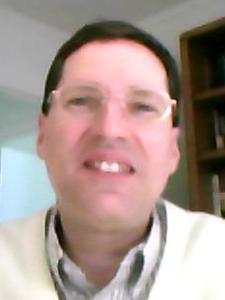
Jordan K. answered • 10/11/15
Tutor
4.9
(79)
Nationally Certified Math Teacher (grades 6 through 12)
Hi Brittany,
Let's begin by assigning letters to represent the number of production units for each type of portable printer:
x = # of "A" type portable printers
y = # of "B" type portable printers
Next, let's write the system of linear inequalities to reflect our given constraints:
1. Cost Constraint (100x + 350y ≤ 600,000)
2. Production Constraint (x + y ≤ 2500)
Next, let's write these inequalities as a system of linear equations to be solved for their common point of intersection, which will represent our optimal production mix for these given constraints:
Equation #1: 100x + 350y = 600,000
Equation #2: x + y = 2500
Next, let's multiply each term in Equation #2 and then solve this system of linear equations via the Elimination technique:
100x + 350y = 600,000
- (100x + 100y = 250,000)
--------------------------------
250y = 350,000
y = 350,000/250
y = 1400 "B" type printers
x + y = 2500 (Equation #2)
x + 1400 = 2500
x = 2500 - 1400
x = 1100 "A" type printers
(x,y) = (1100,1400)
Finally, we'll calculate the optimal profit by plugging in our optimal values (x,y) into our profit equation:
Profit = 45x + 35y
Profit = 45(1100) + 35(1400)
Profit = 43,500 + 49,000
Profit = 92,500
Optimal Profit = $92,500
Below is the link to our graph for the given constraints showing their intersection point (1100,1400), which confirms our algebraic solution above:
https://dl.dropbox.com/s/dlwfamqei5wfy75/Graph_of_Optimal_Profit_for_Production_Mix_of_Portable_Printers.png?raw=1
Thanks for submitting this problem and glad to help.
God bless, Jordan.


Melvin C.
You put 350 in place of 150, this way won’t work with 15009/14/20